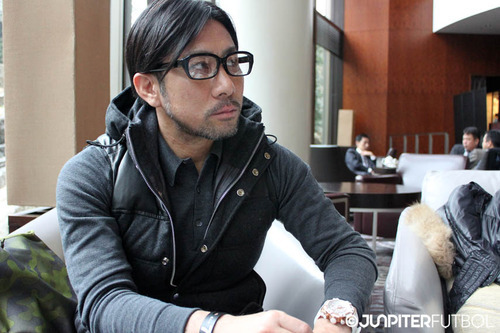
An influential player who captained Japan Olympics team to a famous 1-0 victory over power house Brazil in Atlanta 1996, his transfer from Yokohama Flugels to Verdy Kawasaki fetched an Asian record-breaking fee, his superb dribbling brought him to match some of the world bests in South America… Exclusive Interview by Junpiter Futbol from Japan.
J.LEAGUE RISING SUN
JPF: You had a great playing time for Yokohama Flugels which lead you to the Olympics and subsequently the National Team called-up, tell us more about those wonderful years with Flugels?
MM: Those years were great and memorable. Then, I was young and not yet a regular with the first team so I learnt a lot from the seniors. While playing for Flugels, I developed and discovered my own style of play with the guidance of head coach, Mr. Kamo.
JPF: Your transfer from Yokohama Flugels to Verdy Kawasaki fetched an Asian record-breaking fee of US$3 millions. did that have any impact on you at all?
MM: I am not feeling exactly pressured but I would want to justify my value and play well at Verdy.
JPF: Who did you look up to as a role model or for inspiration during your playing time?
MM: Diego Maradona. During my time, there were not much international games telecasted on television, so I would borrow Diego Maradona’s video from my friend and watched over and over again. His dribbling skills inspired me a lot!
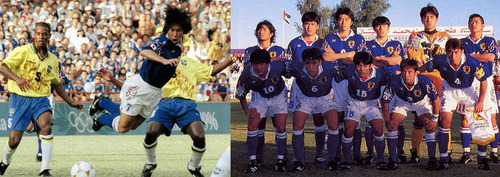
Photo: sanspo.com & samuraisoccer.com
OLYMPICS FOOTBALL
JPF: As a captain of Japan Olympics team, was there a lot of pressure on you when JFA openly announced to build a team with you as the heart of the team in 1995 for Atlanta Olympic?
MM: To be honest, there wasn’t much pressure on me although it’s the first Olympics which Japan participated after J.League was established. Together with the team, we were looking forward to the Olympics and also confident of putting up a good performance.
JPF: Eventually you led Japan to a famous 1-0 victory over Brazil, could you recall what was the strategy and what specific preparations Japan had and took to register that win?
MM: We all knew Brazil was a strong team and they were definitely better than us. That’s a fact. So other than the usual football training which we were doing everyday, we studied and watched Brazil’s video tape for more than a week prior to the game!
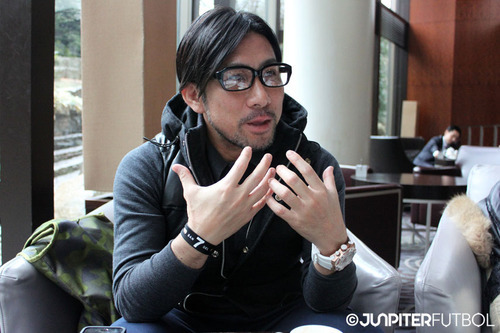
JAPAN NATIONAL TEAM
JPF: Your “karate-chop” goal celebration against Uzbekistan in the Asian Cup 1996 left us with the deepest impression! Why that celebration?
MM: You guys remember that! Haha.. I have a couple of celebration styles in my mind but because of the way how I scored that goal – ball was flicked over to me by Honda (Yasuhito), goalkeeper rushed out, I tapped the ball up and over the on-rushing goalkeeper and scored, it was like a well-coordinated sequence cut into different parts! That’s why I went “chop” here and there! That celebration just came out automatically.
JPF: You and Nakata (Hidetoshi) are best friends. Although you were the first to progress up to the senior team, Nakata went on to play and excel in top European leagues and retired on a high note. Did you envy him?
MM: Definitely his success was my envy! I admired his achievement as he was playing at a much higher level than I was. I was not jealous or resentful. In fact, that created a kind of motivation in me and I was always working hard to progress from where I was.
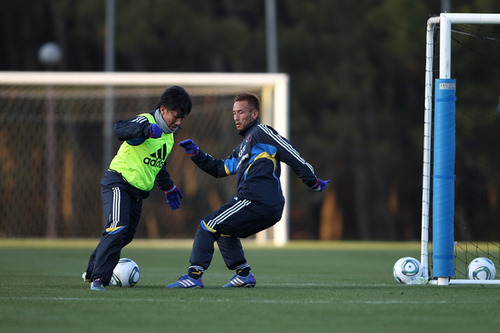
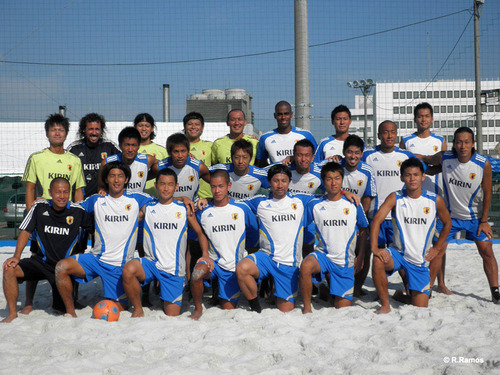
Photo (top): takeactionfoundation.net (bottom): ramos.jp
JPF: You also represented Japan National Beach Soccer Team. In your own opinion, how does the experience of playing 11-aside game benefit your beach soccer game?
MM: Basically the basic skills and techniques are about the same for both 11-aside and beach soccer. However, as I was out of action for nearly 6 months because of retirement, I underwent a lot of training to regain my fitness and also to get used to the playing on the sands.
JPF: You actually came out of retirement to play for Japan National Beach Soccer Team, what was the motivation behind your come back?
MM: I was not playing a lot of football after my retirement until the Beach Soccer Team’s head coach, Ruy Ramos came and invited me to join the team for fun! I thought why not so I went and had fun! But who would have known, eventually I was part of the team and playing competitively!
JPF: What was your football philosophy when you used to play competitively? And what is your football philosophy now?
MM: Basically, there isn’t much difference as I still love the game very much. Just as a player, I used to focus on my play and it was quite a narrow perspective. Now, I am a coach for my own football academy, I am more macro managing the entire thing.
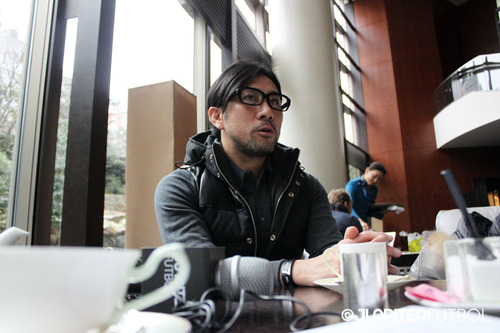
OVERSEAS FOOTBALL
JPF: Why did you chose to play in the Brazilian league when it came to overseas football opportunity?
MM: Previously, I had an offer coming in from Spain but probably as J.League was still very young and new, the transfer of a player from Japan to Europe was not an easy task. Back then, there were also no agent so it was difficult to make the switch. However, when the Brazilian league offer came knocking on the door, I was excited and decided to take up my first overseas challenge! I was at Verdy Kawasaki FC then, both the club and I were matured and professional enough; furthermore, the coach for the Brazilian club used to be my coach in Japan too.
JPF: You spent 2 years playing for two of the most decorated teams; Santos FC and Goias EC in Brazil. What were the sacrifices or changes you had to make to blend into Brazilian football?
MM: Well, I had to adapt to the new playing environment. I tried to master the new language as I was worried about the communication and I hung out more with my team mates for meals so as in blend in into their community. Football wise, my dribbling was effective and good in Japan but over in the Brazil, everyone could dribble better than me! So in order to progress and be better than the rest, I kept practicing on my dribbling as well as improved my decision making on the pitch!
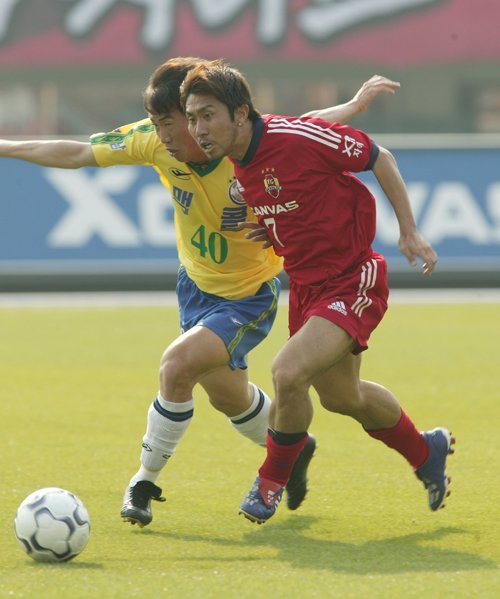
Photo: jinny_soccer
JPF: Towards the end of your professional football career, you moved across the straits to play for Anyang LG Cheetahs and Incheon United FC in the K.League. How different was the play in J.League compared to K.League?
MM: In terms of playing environment, training facilities and style of training and game play are huge differences. Physical training was a norm in a typical Korean team’s training where as Japanese team tend to focus more on tactical play. Korean football seems to place more attention on physical development instead of skill and tactical. And also, if a player was injured in Japan, the player would normally be treated in Japan. But with the same scenario in Korea, the player would be flown overseas for treatment.
JPF: Eventually what made you decided to retire from football?
MM: When I was unable to perform to what I had expected myself to do so, that was the time. I was about 32 years old then and I also started to think about my future. After much consideration, I decided to hang up my boots for good.

Photo: trust.org
SINGAPORE FOOTBALL
JPF: How much do you know about Singapore football?
MM: I was actually in Singapore for 2 weeks last year where I managed to catch two S.League games. It was obviously not the same level as Japan’s J.League but it was better than I expected. I saw many good and potential players during the games.
JPF: Are you able to share with us how you felt when you were invited to participate in the charity game where you represented Take Action with Albirex Singapore in year 2011, playing against Singapore S.League All-Star, together with Nakata (Hidetoshi), Kitazawa (Tsuyoshi) and Sawanobori (Masaaki)?
MM: I was honored and pleased to have the opportunity to participate in such an event. In fact, I was not familiar with charity events and did not have much opportunities to be involved previously. This event made me realized that football is really a common language which can unify everybody together for a great cause. That was one of the beautiful games which I had been involved in.
JPF: Base on your vast experience, which are the things that Singapore football, Singapore National Team and S.League can adopt to improve its football standard?
MM: Most importantly, Singapore has to build an environment to develop more younger players. Only by doing so, you will have players coming through the rank and move up to the National Team. Should you discover talented young players, give them the opportunities to enhance their play overseas. They will come back as an even stronger players.
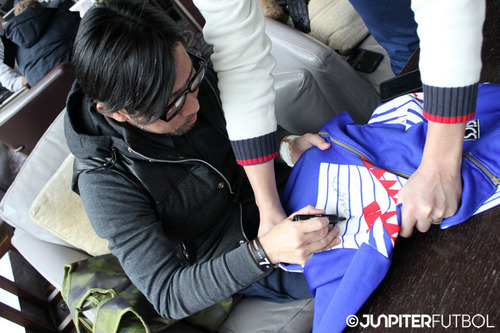
ADVICE
JPF: Are you able to share with us one attribute a player must have in order to play in J.League, K.League and Brazilian league respectively?
MM: No matter where you play, personally I reckon you need 3 attributes – Skill, Physique and Strong Mentality! With these attributes, I believe a player can play anywhere in the world!
JPF: S.League has quite a number of good Japanese players playing in the League, any words of encouragement for them?
MM: My advice to all – I am sure you guys are gaining valuable experience playing abroad. Overseas football will only enhance your play and will be good for your football career. Live for the moment, live for the future!
JPF: How about Junpiter Futbol readers whom a lot aspires to be a professional footballer like you, any advice for them?
MM: If you found something which you like, which in this case, football… keep practicing, keep doing it, your dream will come true!
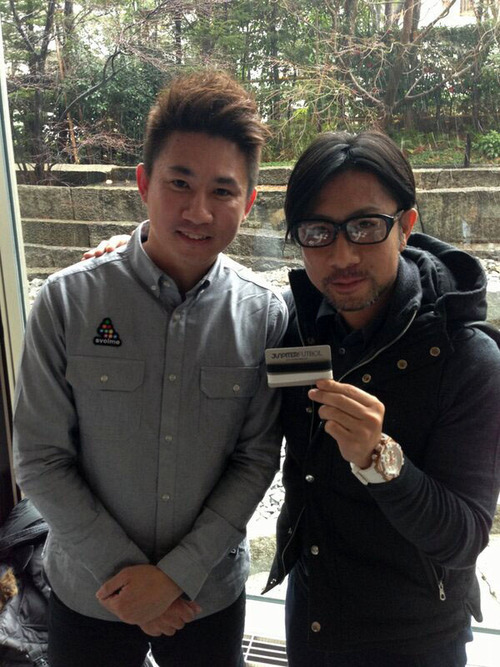









19 thoughts on “Up Close with Masakiyo Maezono in Japan”